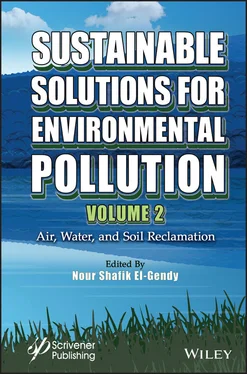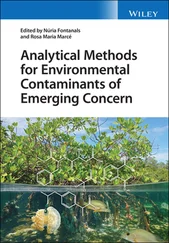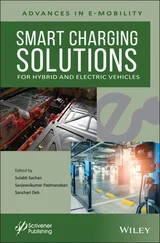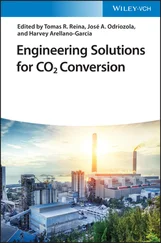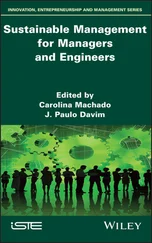Sustainable Solutions for Environmental Pollution, Volume 2
Здесь есть возможность читать онлайн «Sustainable Solutions for Environmental Pollution, Volume 2» — ознакомительный отрывок электронной книги совершенно бесплатно, а после прочтения отрывка купить полную версию. В некоторых случаях можно слушать аудио, скачать через торрент в формате fb2 и присутствует краткое содержание. Жанр: unrecognised, на английском языке. Описание произведения, (предисловие) а так же отзывы посетителей доступны на портале библиотеки ЛибКат.
- Название:Sustainable Solutions for Environmental Pollution, Volume 2
- Автор:
- Жанр:
- Год:неизвестен
- ISBN:нет данных
- Рейтинг книги:3 / 5. Голосов: 1
-
Избранное:Добавить в избранное
- Отзывы:
-
Ваша оценка:
- 60
- 1
- 2
- 3
- 4
- 5
Sustainable Solutions for Environmental Pollution, Volume 2: краткое содержание, описание и аннотация
Предлагаем к чтению аннотацию, описание, краткое содержание или предисловие (зависит от того, что написал сам автор книги «Sustainable Solutions for Environmental Pollution, Volume 2»). Если вы не нашли необходимую информацию о книге — напишите в комментариях, мы постараемся отыскать её.
This second volume in a broad, comprehensive two-volume set, “Sustainable Solutions for Environmental Pollution”, concentrates on air, water, and soil reclamation, some of the biggest challenges facing environmental engineers and scientists today.
AUDIENCE: Sustainable Solutions for Environmental Pollution,
Sustainable Solutions for Environmental Pollution, Volume 2 — читать онлайн ознакомительный отрывок
Ниже представлен текст книги, разбитый по страницам. Система сохранения места последней прочитанной страницы, позволяет с удобством читать онлайн бесплатно книгу «Sustainable Solutions for Environmental Pollution, Volume 2», без необходимости каждый раз заново искать на чём Вы остановились. Поставьте закладку, и сможете в любой момент перейти на страницу, на которой закончили чтение.
Интервал:
Закладка:
1.14.4 Global CW Modeling
Different global models have been proposed for the simulation of CWs. Due to the complexity of the biological reactions involving bacteria and of the processes involving different kinds of plants, all this combined with time-varying physical phenomena (flow patterns, solar irradiance, temperature, and wind), these models are computationally intensive.
Hantush and co-workers have developed the WetQual series dealing with carbon (Sharifi et al. , 2013) and nutrients dynamics (Hantush et al. , 2012; Kalin et al. , 2013) for flooded natural wetlands: WetQual is also applicable to surface-flow CWs. It considers the water column, the plants as well as the sediment and predicts also GHG emissions. The sulfur cycle is much less considered in literature, although a model for sulfate reduction and interacting reactions between sulfur, iron, and carbon reactions has been derived by Ng et al. (2017) based on field data collected on a sulfate-impacted wetland in a mining area (Ng et al. , 2017).
The CW Model N°1 (CWM1) is a general model to describe the fate of OM and nitrogen in SSF-CWs treating wastewater (Langergraber et al. , 2009). Fournel et al. (2013) aimed their hydrodynamic model toward CWs for urban runoff treatment, focusing on the saturation gradient in the porous media (Fournel et al. , 2013). Finally, combination of both approaches enabled to build full models (i.e., describing the 2D-hydrodynamics as well as the biology) of SSF-CWs for urban storm water treatment (Pálfy et al. , 2016; Pálfy et al. , 2017). However, as underlined by Yuan et al. (2020), the biological reactions used on these models are based on the Activated Sludge Model 1 developed for well-mixed reactors (Yuan et al. , 2020), when the bacteria involved in SSF-CWs are fixed on the porous media. Consideration of porous media colonized by biofilm, together with the addition of the fate of emerging pollutants would improve the SSF-CWs models.
1.15 Social Acceptance
Fostering acceptance and practical setup of bioremediation technologies also demand to consider the surrounding society perception. If topics as climate change fight or green energy use are widely socially accepted, then others are touchier. We must consider how citizens trade-off between the perceived benefits and risks from nature-invasive technologies, as for genetic modifications. Some “touchy issues” could influence sociopsychological acceptance of some technologies as in situ electrobioremediation, with nanomaterial implementation.
More broadly, to reduce maintenance costs, involvement and empowering of citizens require knowledge transfer in order to favour the appropriation of setups and ensure sustainability (Clewell and Aronson, 2013). The new bioremediation NBSs located specifically in urban or periurban locations must be co-designed/developed and co-implemented in multi-stakeholder and participatory context. It is the only guarantee of the success of operation over time.
To do this, it is necessary to know well the socio-economic environment of the watershed and the people and institutions concerned (Barthélémy and Armani, 2015). The question is to determine what can be the obstacles to the development of innovative devices in the sector, but also the opportunities. First, it is important to understand the general context of the implementation of its devices. In addition, the view on ecological restoration is also a cultural perception that includes historical, or aesthetic dimensions, each person involved being able to defend one or more values inscribed in well-defined psycho-sociological patterns (Higgs, 1997; Choi, 2007). Finally, on each site, it is necessary that a charismatic person (e.g., president of trade union or association) is in a position to mobilize the living forces of the territory in order to energize the project and convince all stakeholders (Barthélémy and Armani, 2015).
1.15.1 Yzeron Watershed Case Study (France)
In the Yzeron catchment area (France), water management, both qualitatively and quantitatively, has become a concern for local authorities following a flooding problem. While some of the actions undertaken lead to ecological restoration, their primary intention was to address the flooding risk. Therefore, for water managers, any bioremediation measure must be tested before any implementation in order to verify the absence of any conflict with the primary objectives of the project. From this point of view, it is important for one institution to manage both storm water and wastewater at the same time, in order to take much more consistent action. When expertise and skills are disjointed, the effectiveness of wastewater treatment plants can be mitigated by inadequate (or no) treatment of storm water. If the management of these two sources of pollution are not thought out together, then serious malfunctions may occur and, in the best case, a significant loss of time will be observed in setting up a coherent system. Successful implementation of a bioremediation system requires taking into account the perceptions and aspirations of all stakeholders.
A consultation platform is needed to discuss between stakeholders the various and sometimes contradictory issues, such as water quality, flood risks, biodiversity, land constraints, and private interests. Public meetings to inform local residents and users must be organized at all stages of the project, from its development to its implementation, but also with a view to long-term monitoring. Regular information must be disseminated in the local press. The managers’ websites should provide specific information; site visits can be organized for the public to feel involved in the long term.
A participatory approach promotes the co-construction of the joint project, the discussion of controversial technical points and the sharing of responsibilities for the maintenance and sustainability of the system. Local associations must be involved in the process. Specific constraints and problems can thus be taken into account and anticipated, leading to a significant potential time saving and a more coherent and better shared project. The more participatory the project is, the more inclusive it will be at the territorial level and therefore supported by the greatest number of people who will feel involved. Therefore, the communication, consultation, and participation process must try to broaden the debate as much as possible to the public, trying to show how everyone is more or less concerned by the project. The notions of services rendered (e.g., water resource, self-purification capacity, food, and material production), common goods, and general interest can be mobilized to activate the involvement of citizens in the project.
In order to ensure an operational and sustainable bioremediation system, it is essential to warn the managers of the operation and maintenance of the system set up. Staff training in maintenance and the establishment of a long-term monitoring protocol are therefore elements to be included in the project implementation process itself. If possible, a protocol for monitoring and evaluating the system should be set up, possible adjustments should be planned to adapt the system to local specificities from both a technical and a socio-economic point of view. It is prudent to anticipate the various factors that could interfere with the proper functioning of the system (e.g., implementation of regulations for any nearby construction site).
The installation of explanatory panels in the vicinity of the site would promote the sharing of knowledge, the explanation of issues, and benefits and links with society. It is a question of making people understand the technical and biological functioning of the device, but also the issues around the water resource, and the interest of NBSs, and how every citizen can participate in improving trial in practice changes.
Читать дальшеИнтервал:
Закладка:
Похожие книги на «Sustainable Solutions for Environmental Pollution, Volume 2»
Представляем Вашему вниманию похожие книги на «Sustainable Solutions for Environmental Pollution, Volume 2» списком для выбора. Мы отобрали схожую по названию и смыслу литературу в надежде предоставить читателям больше вариантов отыскать новые, интересные, ещё непрочитанные произведения.
Обсуждение, отзывы о книге «Sustainable Solutions for Environmental Pollution, Volume 2» и просто собственные мнения читателей. Оставьте ваши комментарии, напишите, что Вы думаете о произведении, его смысле или главных героях. Укажите что конкретно понравилось, а что нет, и почему Вы так считаете.
